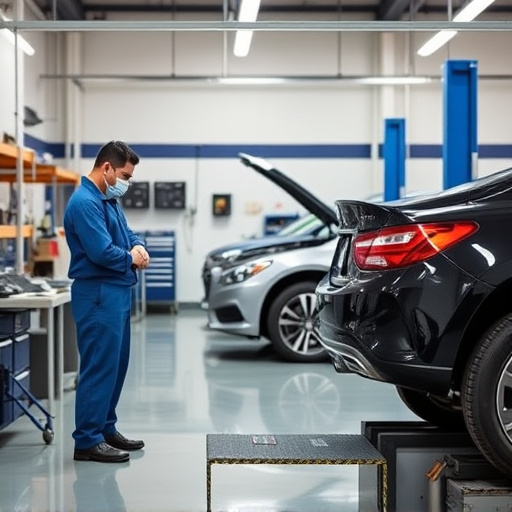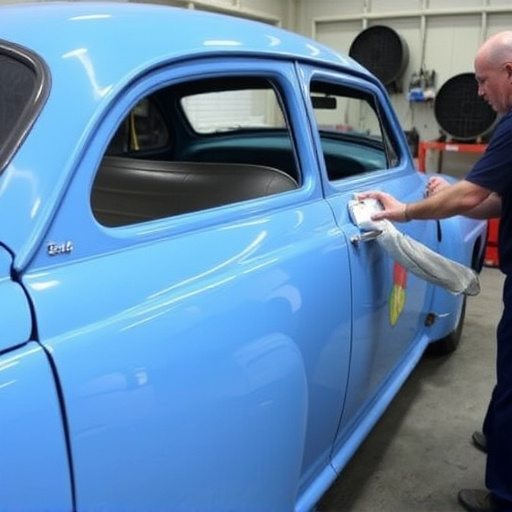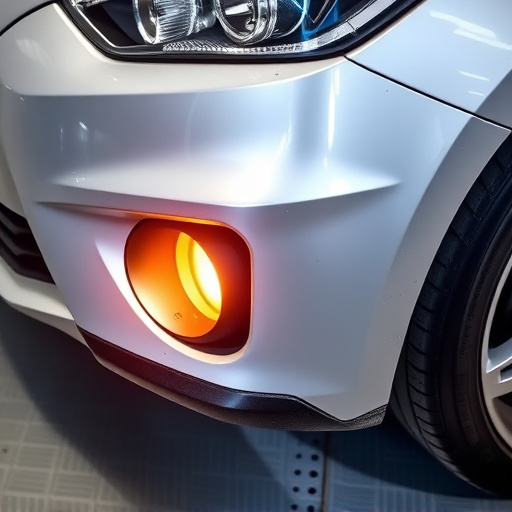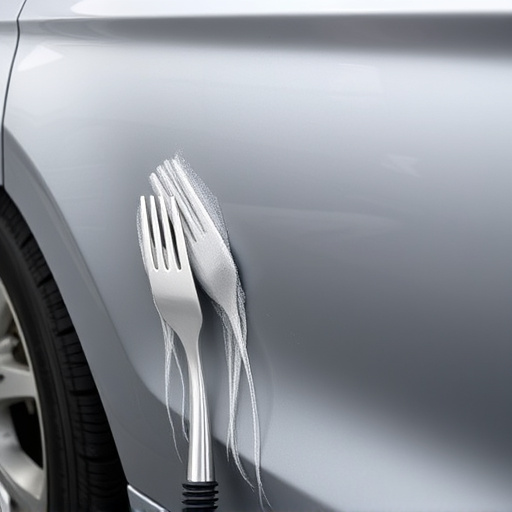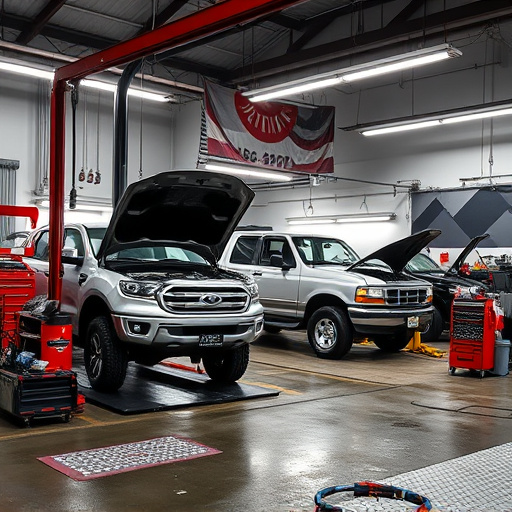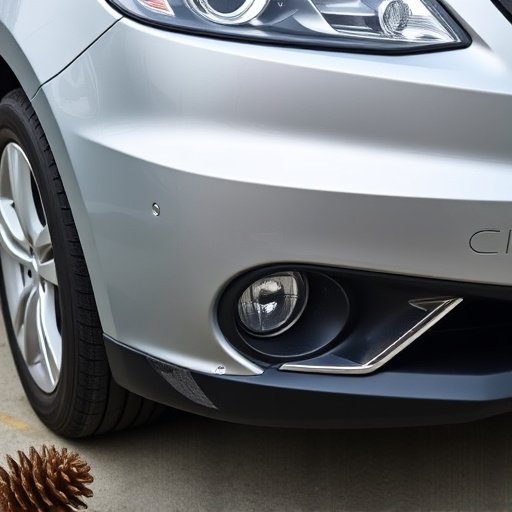During an auto body repair consultation, choosing between OEM and aftermarket parts depends on priorities. OEM parts offer guaranteed fit, quality, and warranty for reliable repairs, while aftermarket parts provide cost savings without compromising safety or aesthetics if high-quality standards are met. Technicians should discuss these options openly to ensure seamless repairs matching original specifications, considering factors like complexity, precision, and budget constraints.
When it comes to auto body repair, choosing the right parts is crucial. In this comprehensive guide, we’ll explore the world of OEM (Original Equipment Manufacturer) vs aftermarket parts during your consultation. Understanding these distinctions is essential for making informed decisions. We’ll delve into the benefits and considerations of OEM parts, as well as the advantages and potential pitfalls of aftermarket alternatives. By the end, you’ll be equipped to navigate auto body repair consultations with confidence.
- Understanding OEM and Aftermarket Parts: A Comprehensive Overview
- Benefits and Considerations of Using OEM Parts in Auto Body Repair
- Exploring Aftermarket Alternatives: Pros, Cons, and Quality Assessment
Understanding OEM and Aftermarket Parts: A Comprehensive Overview

When it comes to auto body repair consultation, understanding the distinction between Original Equipment Manufacturer (OEM) and aftermarket parts is essential. OEM parts are directly produced by the vehicle manufacturer, designed specifically for a particular make and model. They offer a guaranteed fit, superior quality, and often come with warranty coverage, making them ideal for those prioritizing reliability and original specifications.
Aftermarket parts, on the other hand, are manufactured by third-party suppliers and are designed to replace OEM components. While they can vary widely in terms of quality and compatibility, aftermarket options typically provide a more cost-effective solution for auto body repair consultations. For instance, consider a Mercedes Benz collision repair scenario where a client seeks an alternative to OEM parts. Aftermarket glass replacement or car paint repair using these parts can offer significant savings without compromising on safety or aesthetics, depending on the supplier and their quality standards.
Benefits and Considerations of Using OEM Parts in Auto Body Repair
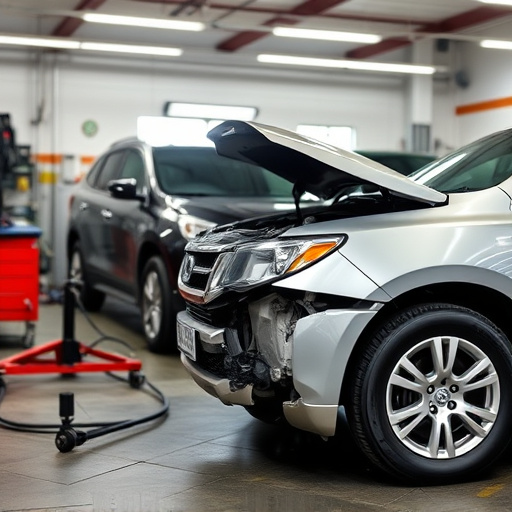
Using Original Equipment Manufacturer (OEM) parts in auto body repair offers several advantages for both repair technicians and vehicle owners. In an auto body repair consultation, it’s crucial to weigh the benefits of OEM against aftermarket alternatives. One key advantage is the guarantee provided by the manufacturer, ensuring quality and compatibility that can be especially important for complex systems or when addressing intricate dent removal or car collision repair processes. This peace of mind can save time and money in the long run, as potential issues due to subpar parts are minimized.
Additionally, OEM parts often come with detailed specifications and data, which facilitates precise repairs. This is particularly beneficial for tire services, where matching the exact tire model and specifications is vital for safety and performance. During a consultation, technicians can discuss these aspects openly, ensuring that the chosen parts align perfectly with the vehicle’s original design and requirements, ultimately contributing to a more seamless and reliable repair process.
Exploring Aftermarket Alternatives: Pros, Cons, and Quality Assessment
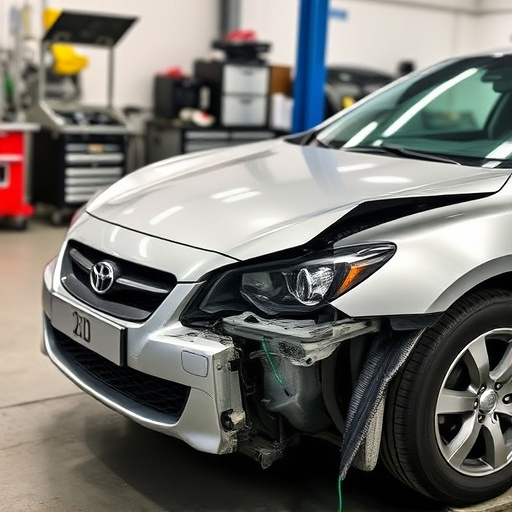
When considering auto body repair consultation, exploring aftermarket alternatives offers a range of benefits and potential drawbacks. One advantage is cost savings, as aftermarket parts are generally less expensive than OEM (original equipment manufacturer) parts. This can be particularly appealing for budget-conscious car owners. Additionally, the availability of aftermarket options allows for greater flexibility in choosing specific brands or models known for their quality or compatibility with your vehicle.
However, assessing the quality of aftermarket parts is crucial. While many aftermarket manufacturers produce reliable components, there can be variations in standards and performance. Impartial reviews and feedback from other customers can help guide your decision. During an auto body repair consultation, it’s vital to discuss these considerations to ensure that any recommended aftermarket parts meet the required safety and quality standards for your automotive body work or car repair services, ultimately providing the best value for money in terms of body shop services.
When considering OEM versus aftermarket parts for auto body repair, a thorough consultation is key. By understanding the unique benefits and drawbacks of each option, as outlined in this guide, car owners can make informed decisions tailored to their specific needs. Whether prioritizing original equipment quality or exploring cost-effective alternatives, consulting experts ensures the best possible outcome for safe, reliable, and long-lasting auto body repair.

